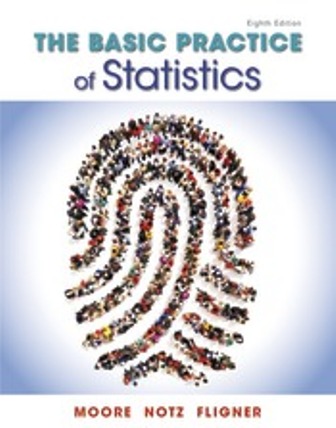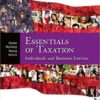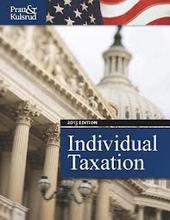Solution Manual for The Basic Practice of Statistics, 8th Edition, David S. Moore
$35.00
Solution Manual for The Basic Practice of Statistics, 8th Edition, David S. Moore
Solution Manual for The Basic Practice of Statistics, 8th Edition, David S. Moore, William I. Notz, Michael A. Fligner
Table of Contents
PART I: EXPLORING DATA
Chapter 0 Getting Started
Where data comes from matters
Always look at the data
Variation is everywhere
What lies ahead in this book
Chapter 1 Picturing Distributions with Graphs
1.1 Individuals and variables
1.2 Categorical variables: Pie charts and bar graphs
1.3 Quantitative variables: Histograms
1.4 Interpreting histograms
1.5 Quantitative variables: Stemplots
1.6 Time plots
Chapter 2 Describing Distributions with Numbers
2.1 Measuring center: The mean
2.2 Measuring center: The median
2.3 Comparing the mean and the median
2.4 Measuring spread: The quartiles
2.5 The five-number summary and boxplots
2.6 Spotting suspected outliers*
2.7 Measuring spread: The standard deviation
2.8 Choosing measures of center and spread
2.9 Using technology
2.10 Organizing a statistical problem
Chapter 3 The Normal Distributions
3.1 Density curves
3.2 Describing density curves
3.3 Normal distributions
3.4 The 68-95-99.7 rule
3.5 The standard Normal distribution
3.6 Finding Normal proportions
3.7 Using the standard Normal table
3.8 Finding a value given a proportion
Chapter 4 Scatterplots and Correlation
4.1 Explanatory and response variables
4.2 Displaying relationships: Scatterplots
4.3 Interpreting scatterplots
4.4 Adding categorical variables to scatterplots
4.5 Measuring linear association: Correlation
4.6 Facts about correlation
Chapter 5 Regression
5.1 Regression lines
5.2 The least-squares regression line
5.3 Using technology
5.4 Facts about least-squares regression
5.5 Residuals
5.6 Influential observations
5.7 Cautions about correlation and regression
5.8 Association does not imply causation
5.9 Correlation, prediction, and big data*
Chapter 6 Two-Way Tables*
6.1 Marginal distributions
6.2 Conditional distributions
6.3 Simpson’s paradox
Chapter 7 Exploring Data: Part I Review
Part I Summary
Test Yourself
Supplementary Exercises
PART II: PRODUCING DATA
Chapter 8 Producing Data: Sampling
8.1 Population versus sample
8.2 How to sample badly
8.3 Simple random samples
8.4 Inference about the population
8.5 Other sampling designs
8.6 Cautions about sample surveys
8.7 The impact of technology
Chapter 9 Producing Data: Experiments
9.1 Observation versus experiment
9.2 Subjects, factors, treatments
9.3 How to experiment badly
9.4 Randomized comparative experiments
9.5 The logic of randomized comparative experiments
9.6 Cautions about experimentation
9.7 Matched pairs and other block designs
Chapter 10 Data Ethics*
10.1 Institutional review boards
10.2 Informed consent
10.3 Confidentiality
10.4 Clinical trials
10.5 Behavioral and social science experiments
Chapter 11 Producing Data: Part II Review
Part II summary
Test yourself
Supplementary exercises
PART III: FROM DATA PRODUCTION TO INFERENCE
Chapter 12 Introducing Probability
12.1 The idea of probability
12.2 The search for randomness*
12.3 Probability models
12.4 Probability rules
12.5 Discrete probability models
12.6 Continuous probability models
12.7 Random variables
12.8 Personal probability*
Chapter 13 General Rules of Probability*
13.1 The general addition rule
13.2 Independence and the multiplication rule
13.3 Conditional probability
13.4 The general multiplication rule
13.5 Showing events are independent
13.6 Tree diagrams
13.7 Bayes’ rule*
Chapter 14 Binomial Distributions*
14.1 The binomial setting and binomial distributions
14.2 Binomial distributions in statistical sampling
14.3 Binomial probabilities
14.4 Using technology
14.5 Binomial mean and standard deviation
14.6 The Normal approximation to binomial distributions
Chapter 15 Sampling Distributions
15.1 Parameters and statistics
15.2 Statistical estimation and the law of large numbers
15.3 Sampling distributions
15.4 The sampling distribution of x
15.5 The central limit theorem
15.6 Sampling distributions and statistical significance*
Chapter 16 Confidence Intervals: The Basics
16.1 The reasoning of statistical estimation
16.2 Margin of error and confidence level
16.3 Confidence intervals for a population mean
16.4 How confidence intervals behave
Chapter 17 Tests of Significance: The Basics
17.1 The reasoning of tests of significance
17.2 Stating hypotheses
17.3 P-value and statistical significance
17.4 Tests for a population mean
17.5 Significance from a table*
Chapter 18 Inference in Practice
18.1 Conditions for inference in practice
18.2 Cautions about confidence intervals
18.3 Cautions about significance tests
18.4 Planning studies: Sample size for confidence intervals
18.5 Planning studies: The power of a statistical test*
Chapter 19 From Data Production to Inference: Part III Review
Part III Summary
Review Exercises
Test Yourself
Supplementary Exercises
PART IV: INFERENCE ABOUT VARIABLES
Chapter 20 Inference about a Population Mean
20.1 Conditions for inference about a mean
20.2 The t distributions
20.3 The one-sample t confidence interval
20.4 The one-sample t test
20.5 Using technology
20.6 Matched pairs t procedures
20.7 Robustness of t procedures
Chapter 21 Comparing Two Means
21.1 Two-sample problems
21.2 Comparing two population means
21.3 Two-sample t procedures
21.4 Using technology
21.5 Robustness again
21.6 Details of the t approximation*
21.7 Avoid the pooled two-sample t procedures*
21.8 Avoid inference about standard deviations*
Chapter 22 Inference about a Population Proportion
22.1 The sample proportion
22.2 Large-sample confidence intervals for a proportion
22.3 Choosing the sample size
22.4 Significance tests for a proportion
22.5 Plus four confidence intervals for a proportion*
Chapter 23 Comparing Two Proportions
23.1 Two-sample problems: Proportions
23.2 The sampling distribution of a difference between proportions
23.3 Large-sample confidence intervals for comparing proportions
23.4 Using technology
23.5 Significance tests for comparing proportions
23.6 Plus four confidence intervals for comparing proportions*
Chapter 24 Inference about Variables: Part IV Review
Part IV summary
Test yourself
Supplementary exercises
PART V: INFERENCE ABOUT RELATIONSHIPS
Chapter 25 Two Categorical Variables: The Chi-Square Test
25.1 Two-way tables
25.2 The problem of multiple comparisons
25.3 Expected counts in two-way tables
25.4 The chi-square test statistic
25.5 Using technology
25.6 The chi-square distributions
25.7 Cell counts required for the chi-square test
25.8 Uses of the chi-square test: Independence and homogeneity
25.9 The chi-square test for goodness of fit*
Chapter 26 Inference for Regression
26.1 Conditions for regression inference
26.2 Estimating the parameters
26.3 Using technology
26.4 Testing the hypothesis of no linear relationship
26.5 Testing lack of correlation
26.6 Confidence intervals for the regression slope
26.7 Inference about prediction
26.8 Checking the conditions for inference
Chapter 27 One-Way Analysis of Variance:
Comparing Several Means
27.1 Comparing several means
27.2 The analysis of variance F test
27.3 Using technology
27.4 The idea of analysis of variance
27.5 Conditions for ANOVA
27.6 F distributions and degrees of freedom
27.7 Follow-up analysis: Tukey pairwise multiple comparisons
27.8 Some details of ANOVA*
[Back matter print text]Notes and Data Sources
Tables
TABLE A Standard Normal probabilities
TABLE B Random digits
TABLE C t distribution critical values
TABLE D Chi-square distribution critical values
TABLE E Critical values of the correlation r
Answers to Selected Exercises
Index
PART VI: OPTIONAL COMPANION CHAPTERS
(available online)
Chapter 28 Nonparametric Tests
28.1 Comparing two samples: The Wilcoxon rank sum test
28.2 The Normal approximation for W
28.3 Using technology
28.4 What hypotheses does Wilcoxon test?
28.5 Dealing with ties in rank tests
28.6 Matched pairs: The Wilcoxon signed rank test
28.7 The Normal approximation for W+
28.8 Dealing with ties in the signed rank test
28.9 Comparing several samples: The Kruskal-Wallis test
28.10 Hypotheses and conditions for the Kruskal-Wallis test
28.11 The Kruskal-Wallis test statistic
Chapter 29 Multiple Regression
29.1 Parallel regression lines
29.2 Estimating parameters
29.3 Using technology
29.4 Inference for multiple regression
29.5 Interaction
29.6 The multiple linear regression model
29.7 The woes of regression coefficients
29.8 A case study for multiple regression
29.9 Inference for regression parameters
29.10 Checking the conditions for inference
Chapter 30 More about Analysis of Variance
30.1 Beyond one-way ANOVA
30.2 Two-way ANOVA: Conditions, main effects, and interaction
30.3 Inference for two-way ANOVA
30.4 Some details of two-way ANOVA*
Chapter 31 Statistical Process Control
31.1 Processes
31.2 Describing processes
31.3 The idea of statistical process control
31.4 x charts for process monitoring
31.5 s charts for process monitoring
31.6 Using control charts
31.6 Setting up control charts
31.7 Comments on statistical control
31.8 Don’t confuse control with capability!
31.9 Control charts for sample proportions
31.10 Control limits for p charts
Chapter 32 Resampling: Permutation Tests and the Bootstrap
32.1 Randomization in experiments as a basis for inference
32.2 Permutation tests for comparing two treatments with software
32.3 Generating bootstrap samples
32.4 Bootstrap standard errors and confidence intervals
Be the first to review “Solution Manual for The Basic Practice of Statistics, 8th Edition, David S. Moore” Cancel reply
Related products
Solution Manual
Solution Manual
Solution Manual for Introduction to Electrodynamics, 4/E 4th
Solution Manual












Reviews
There are no reviews yet.